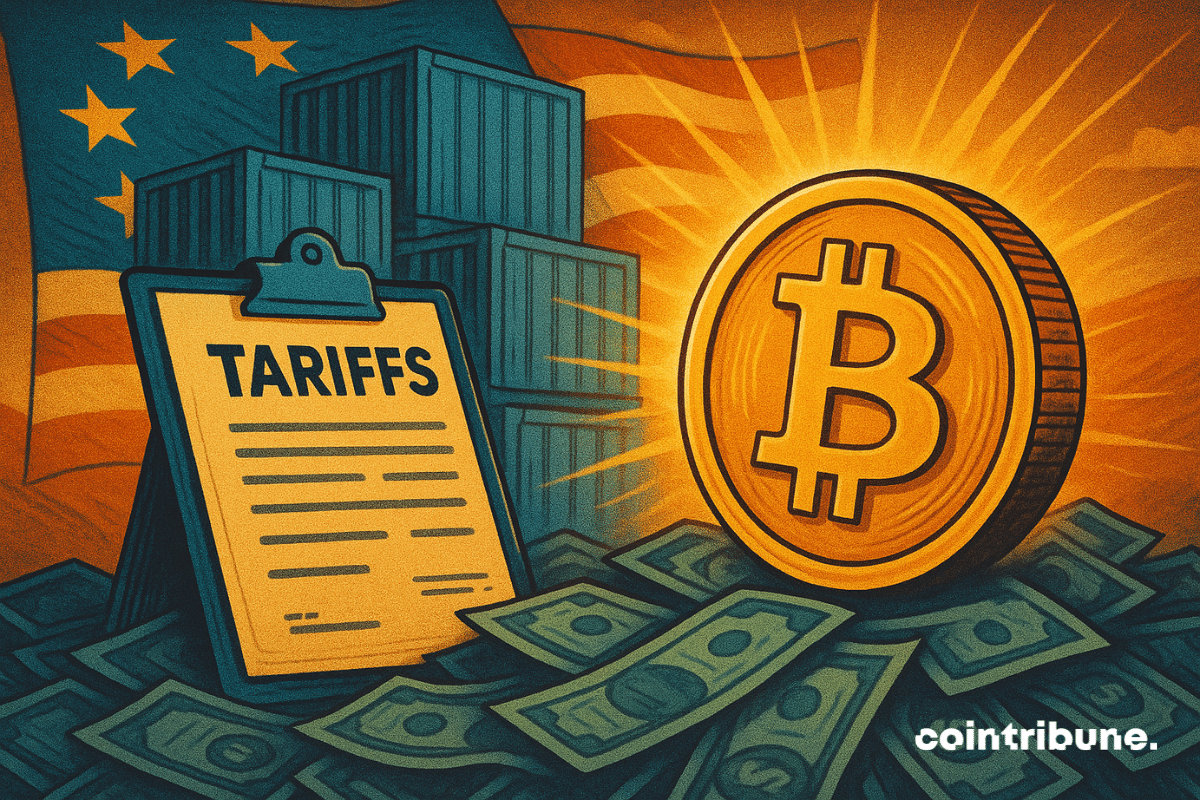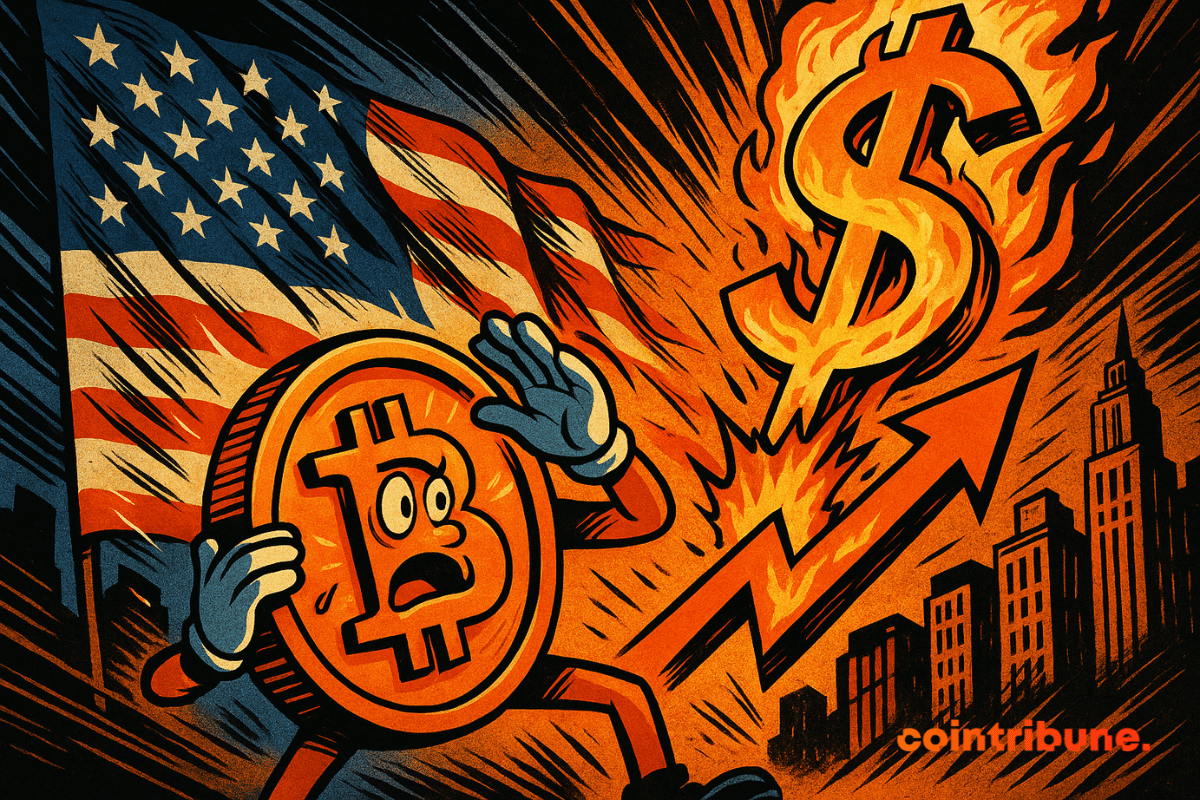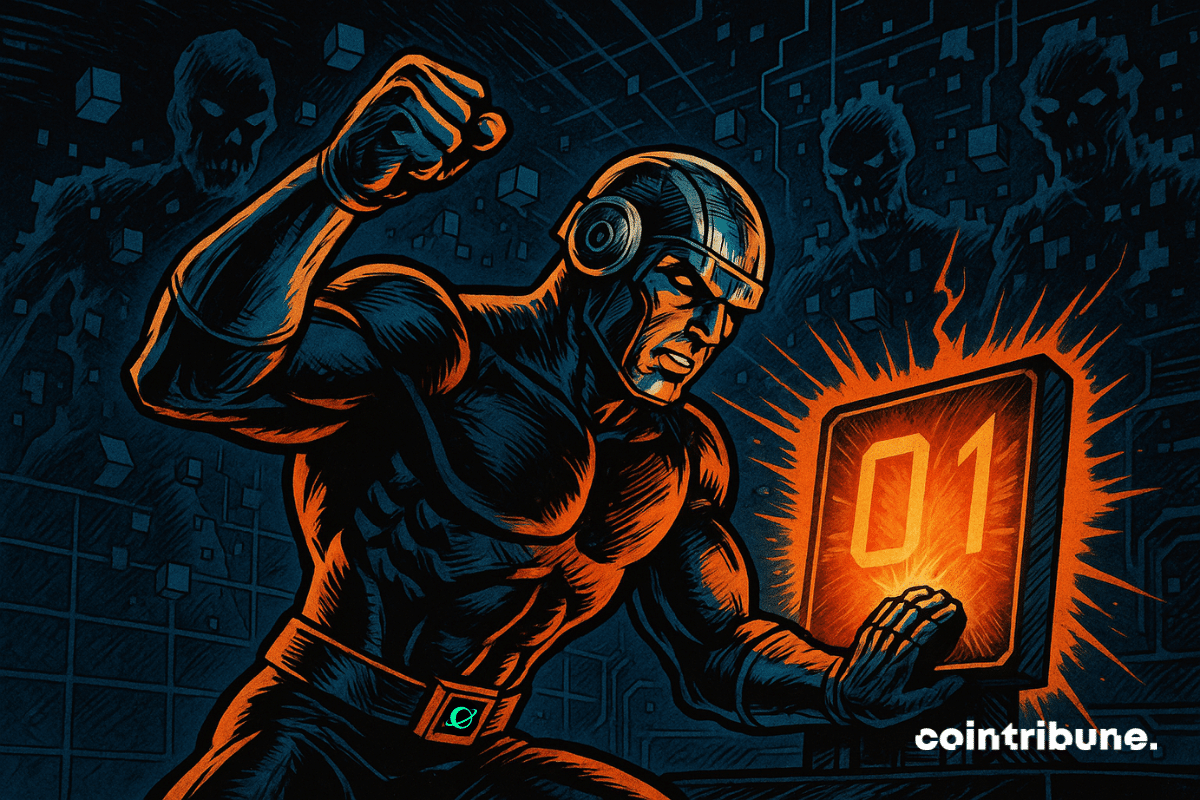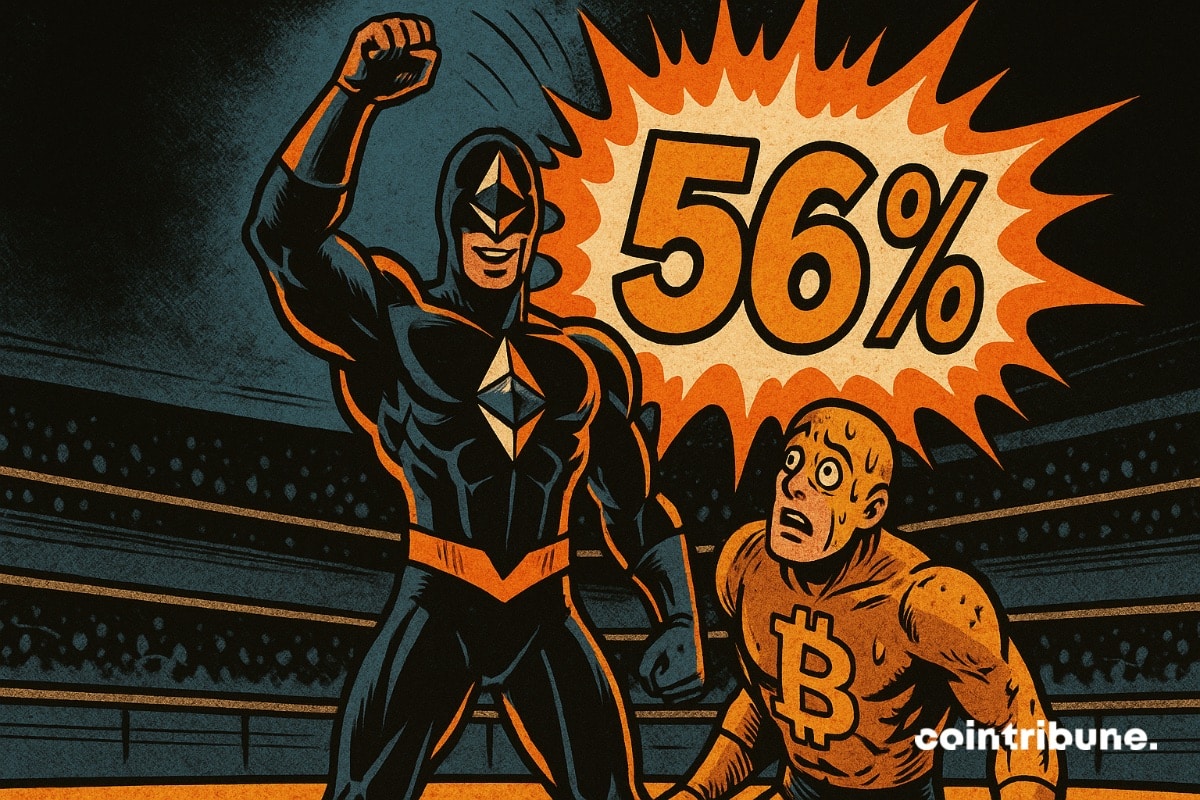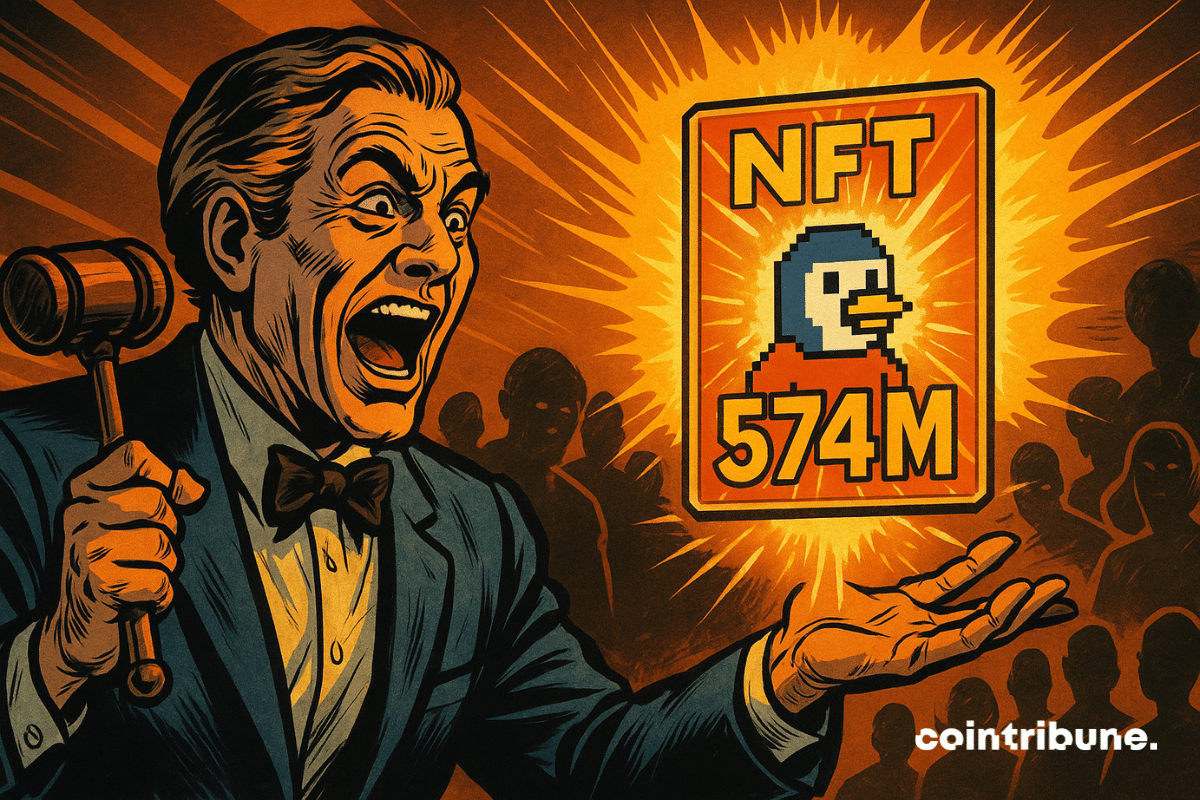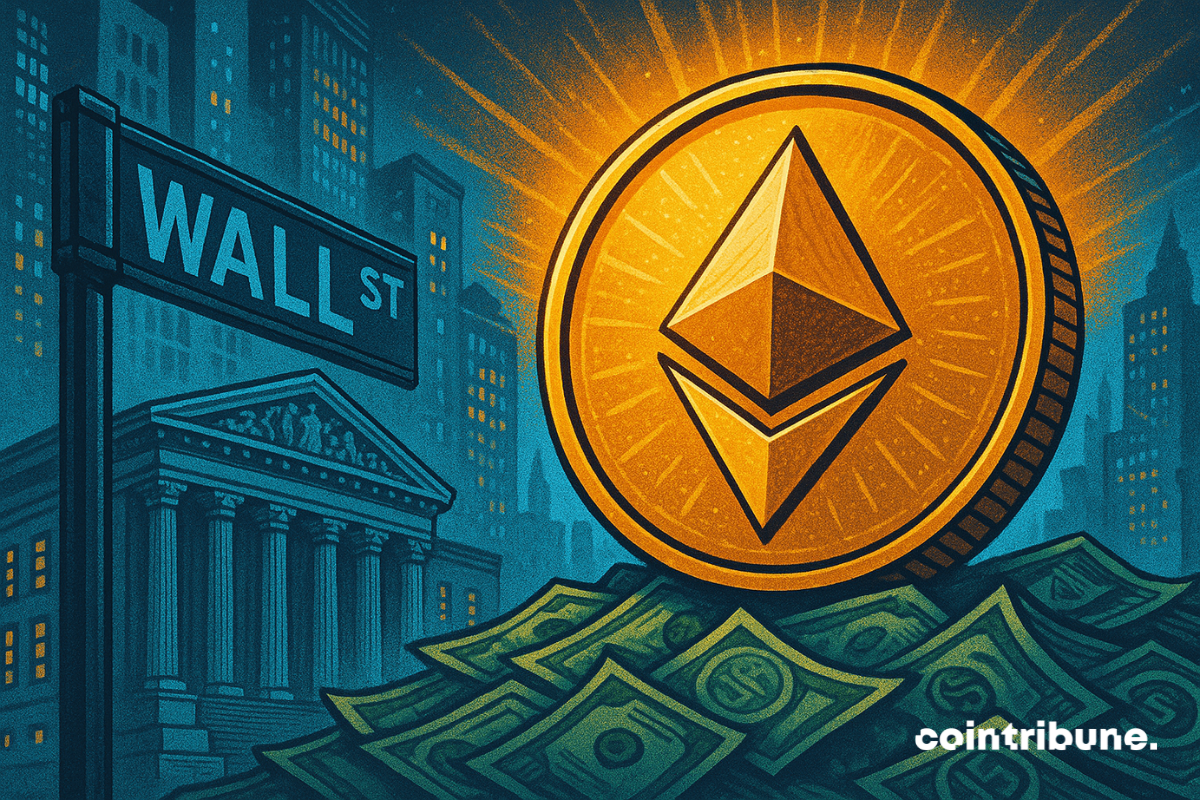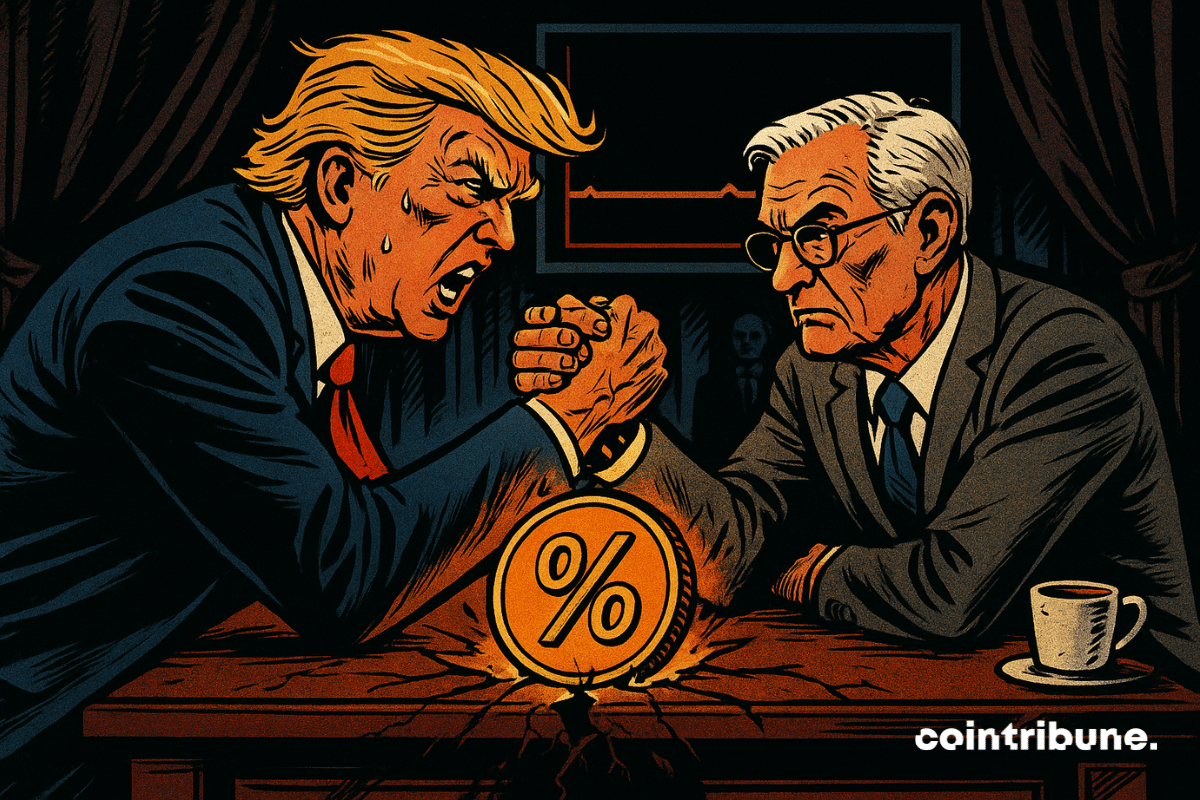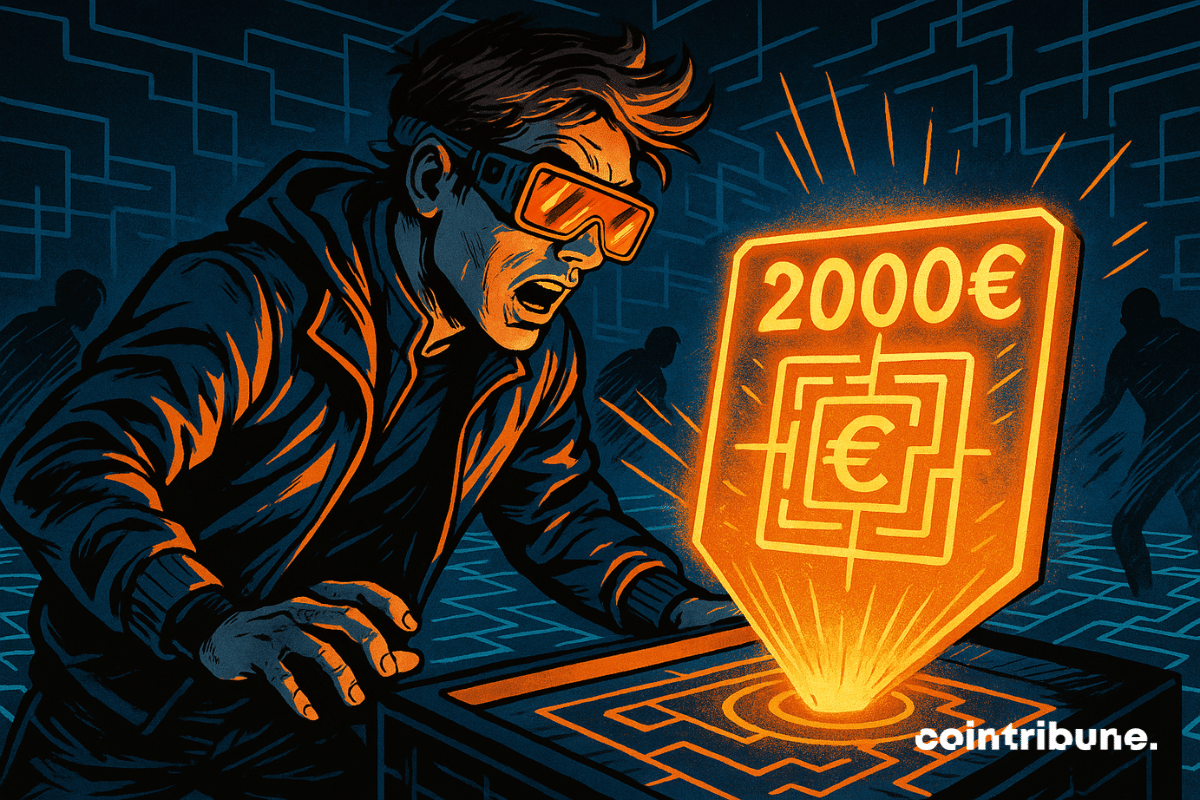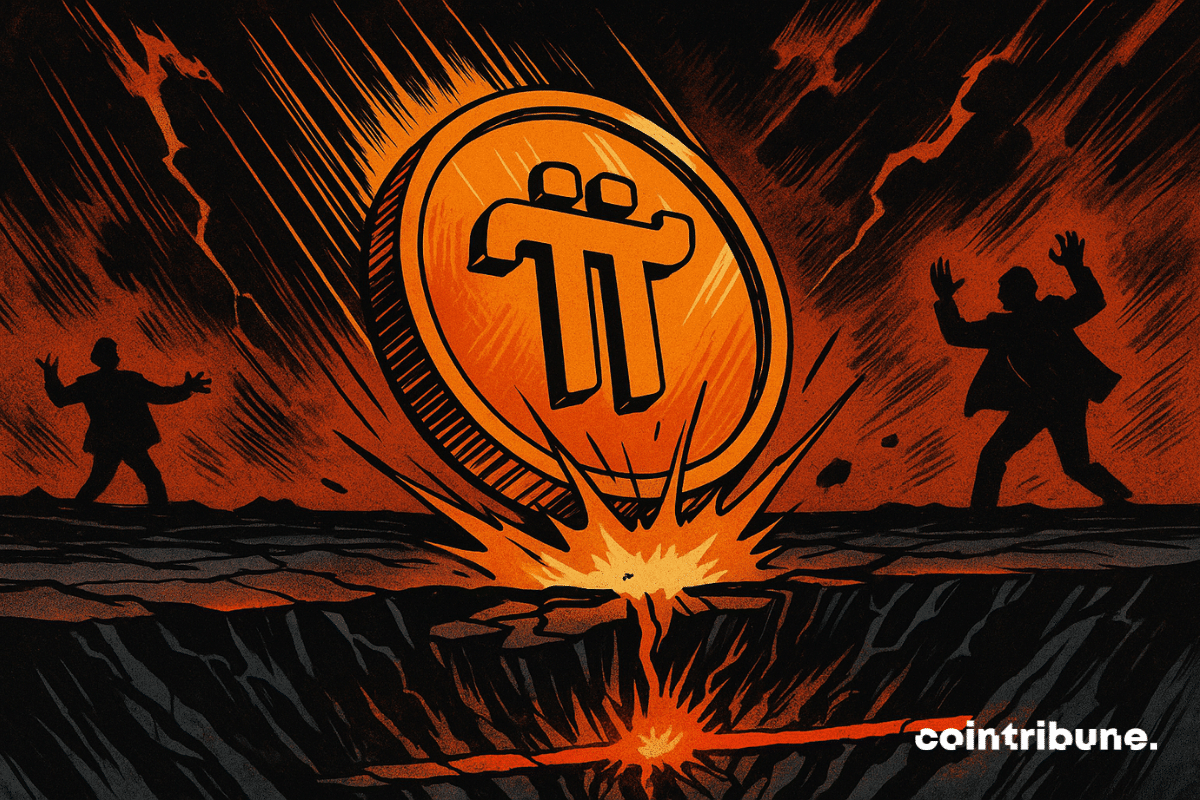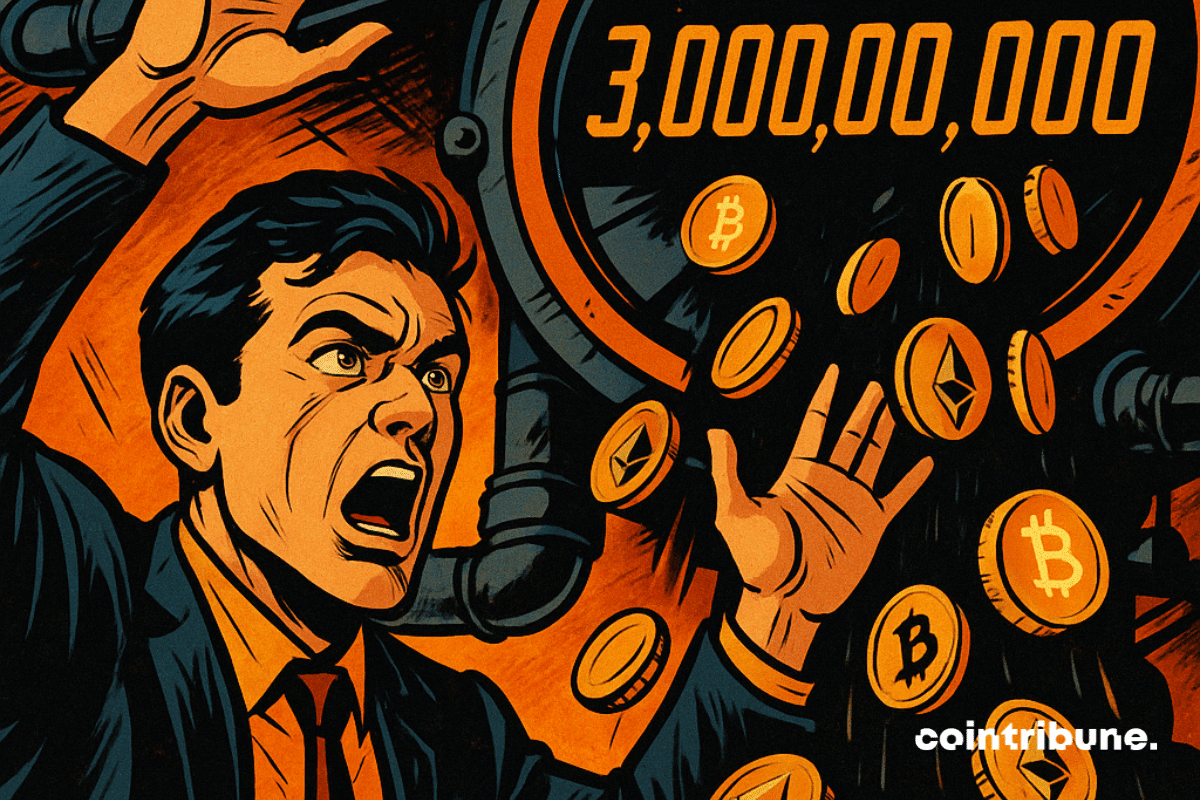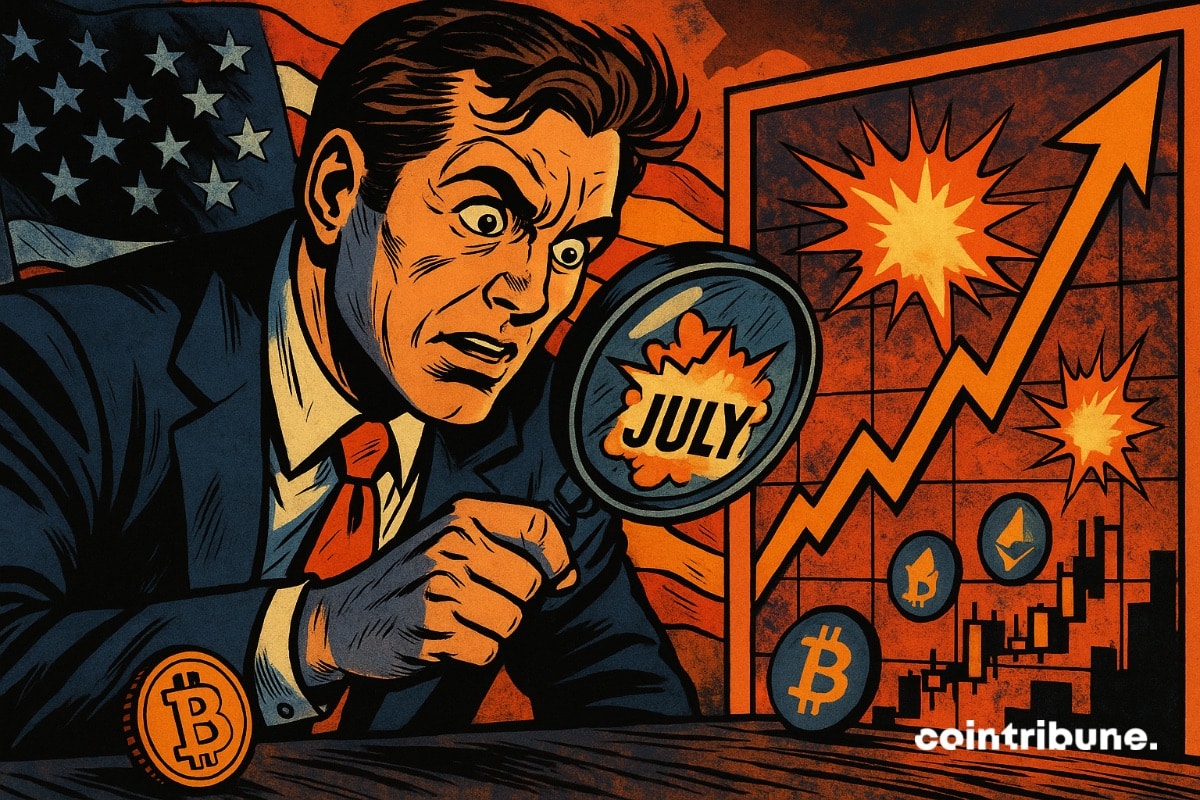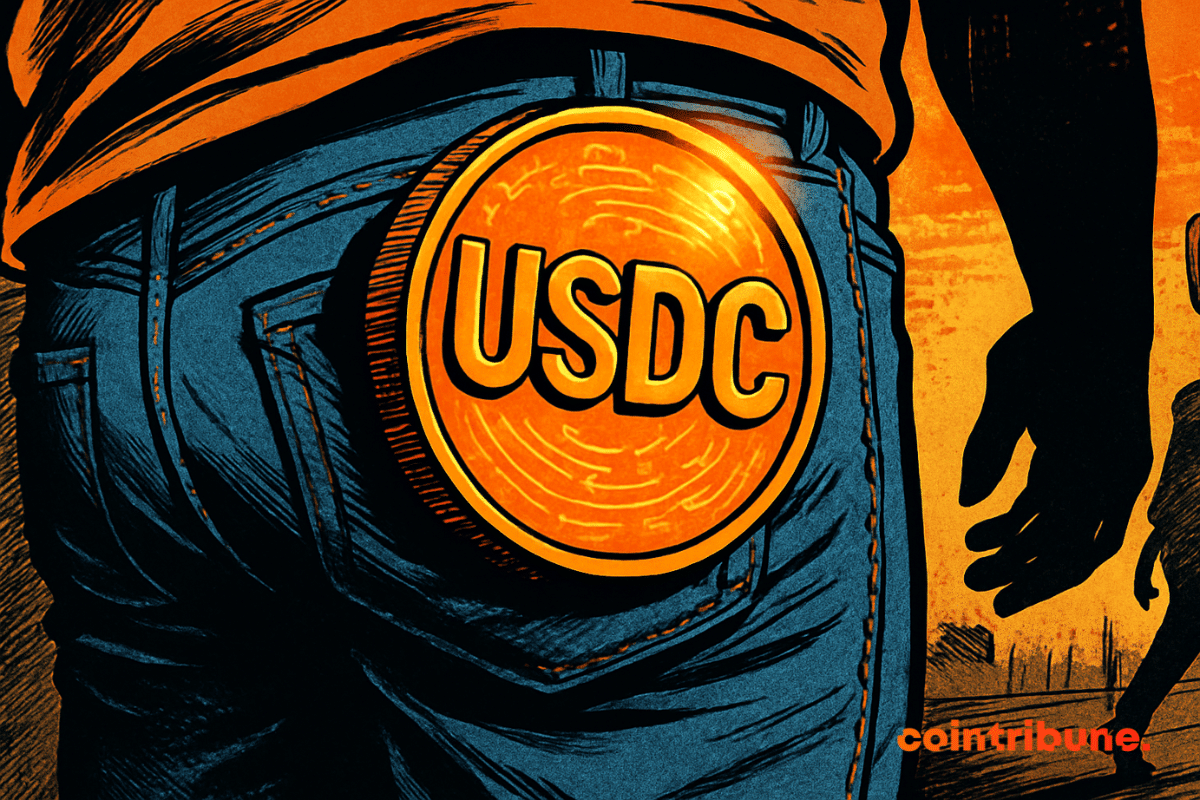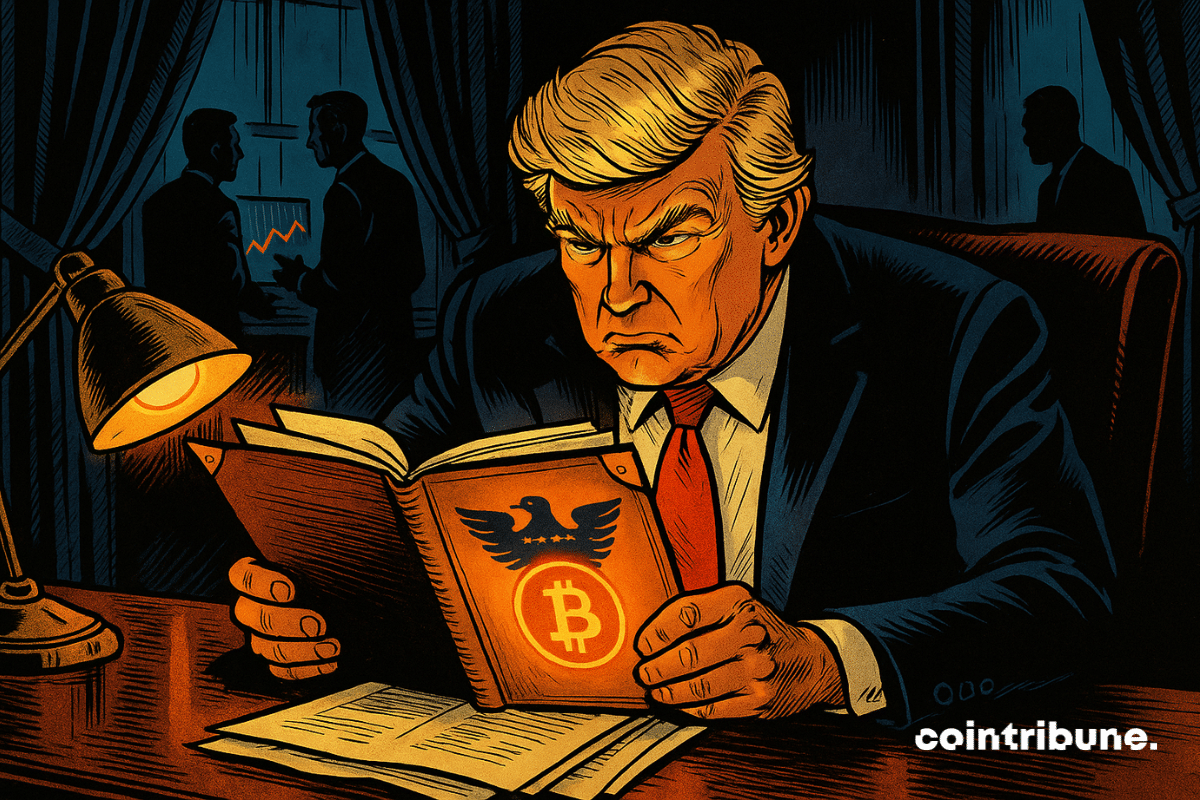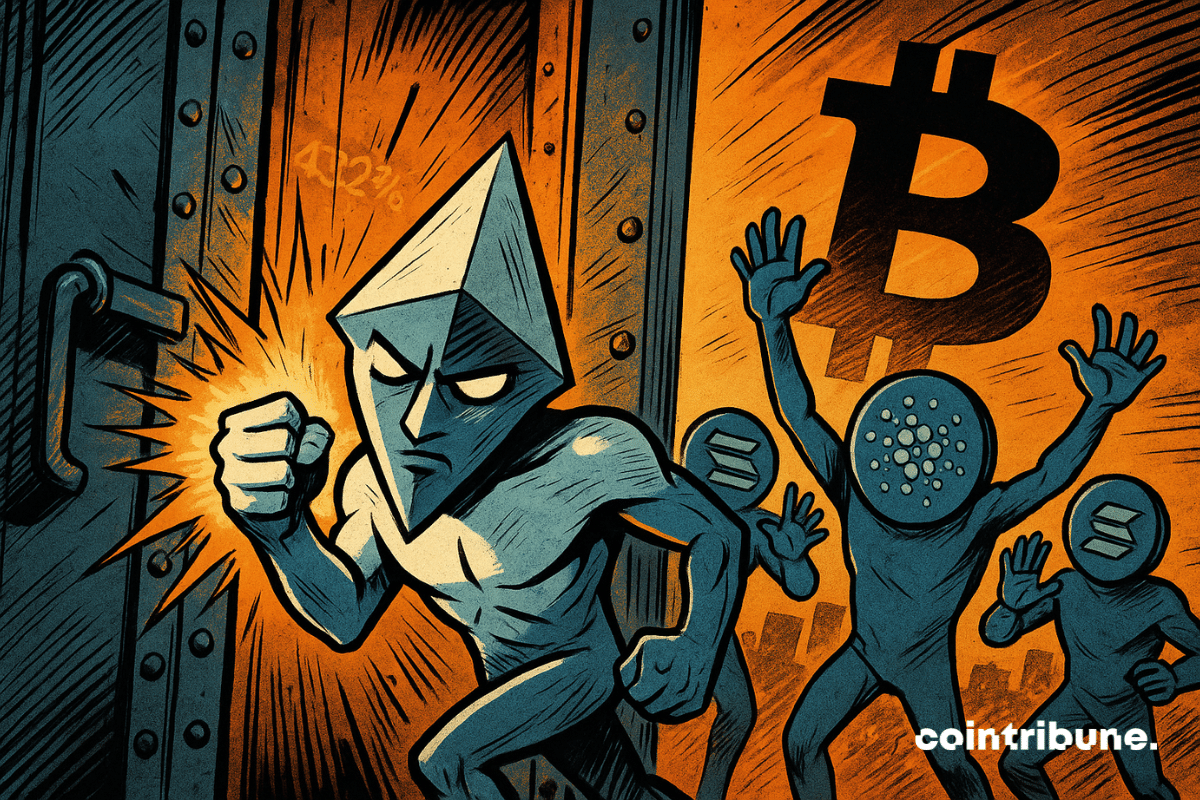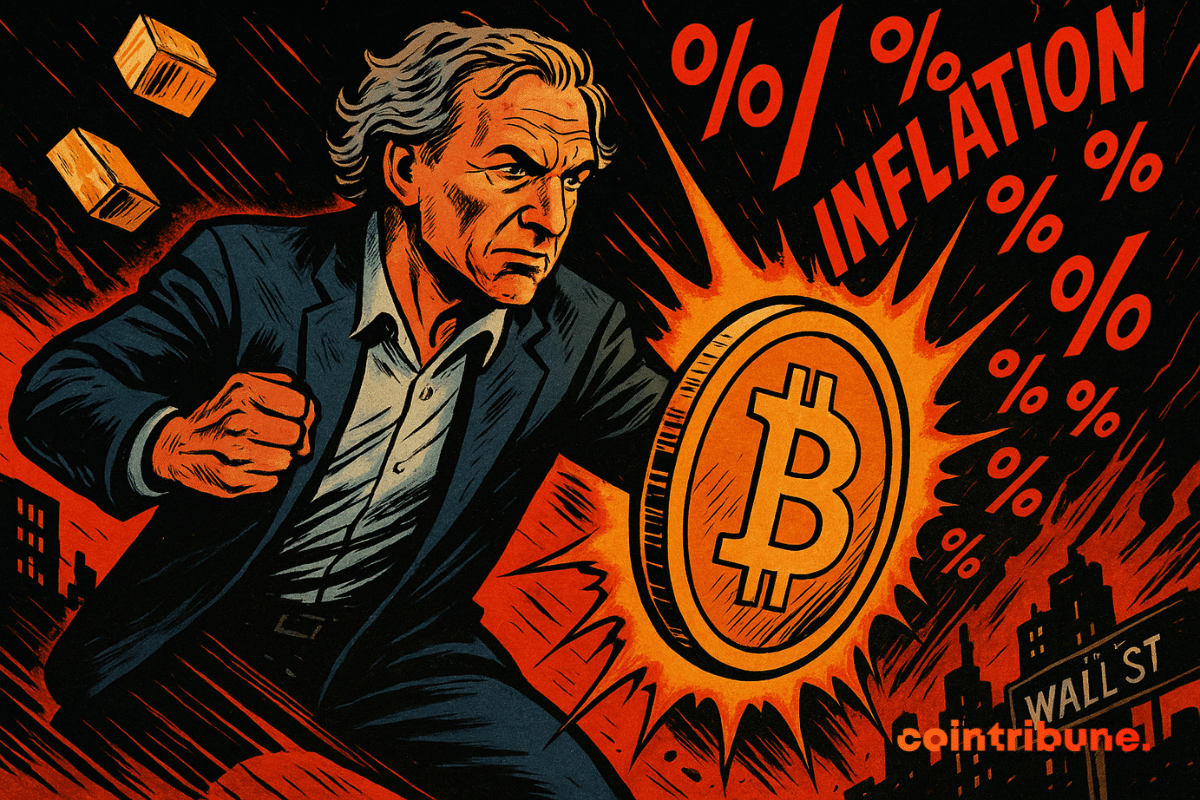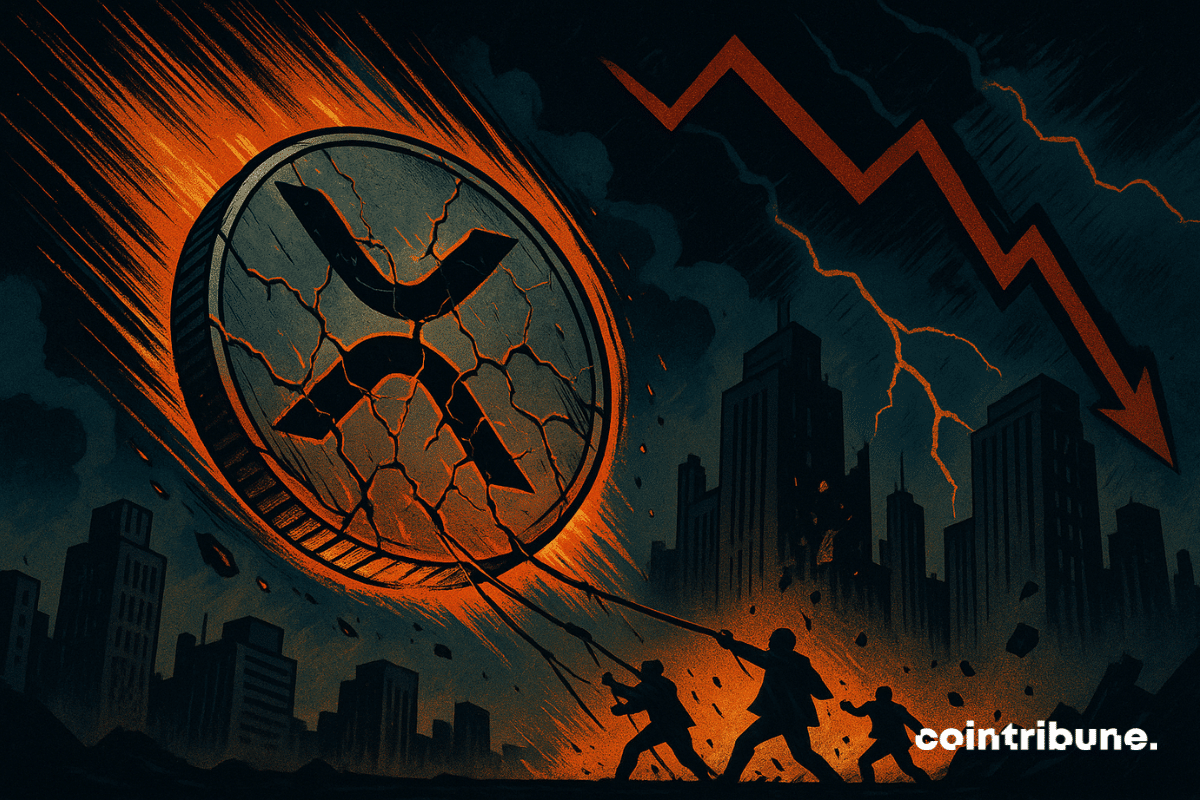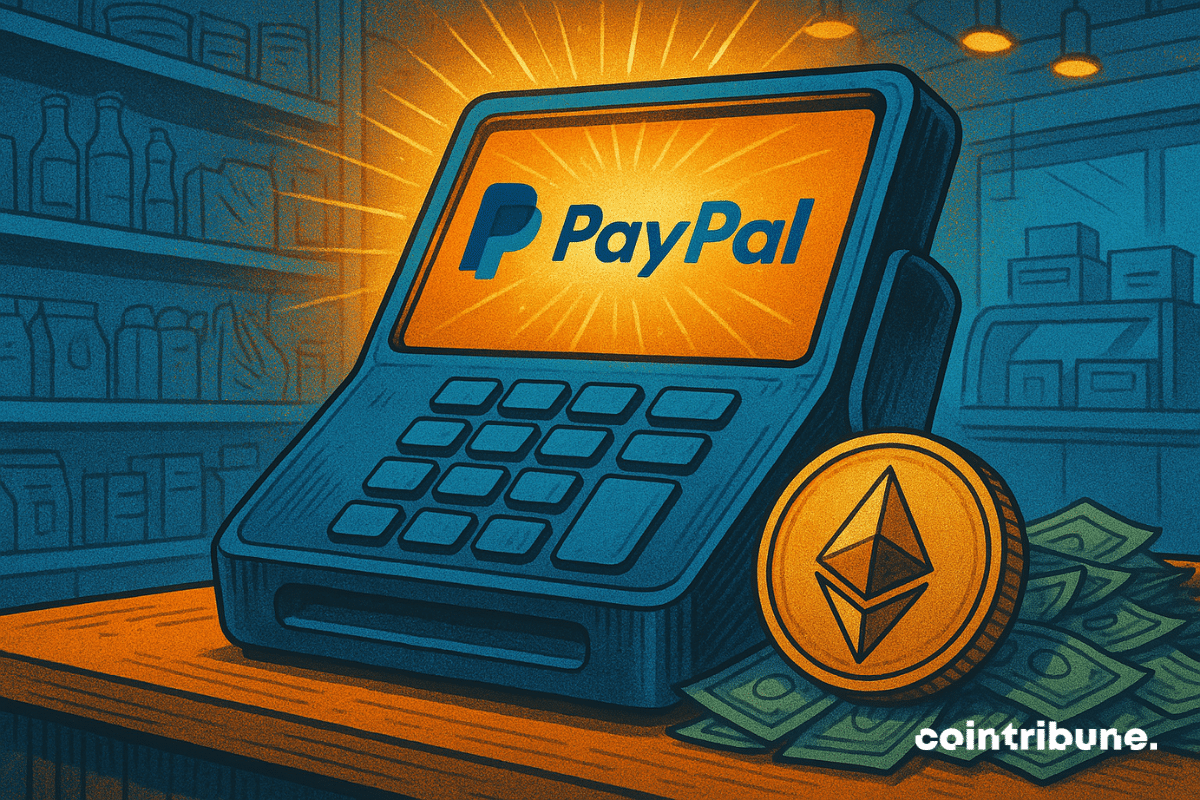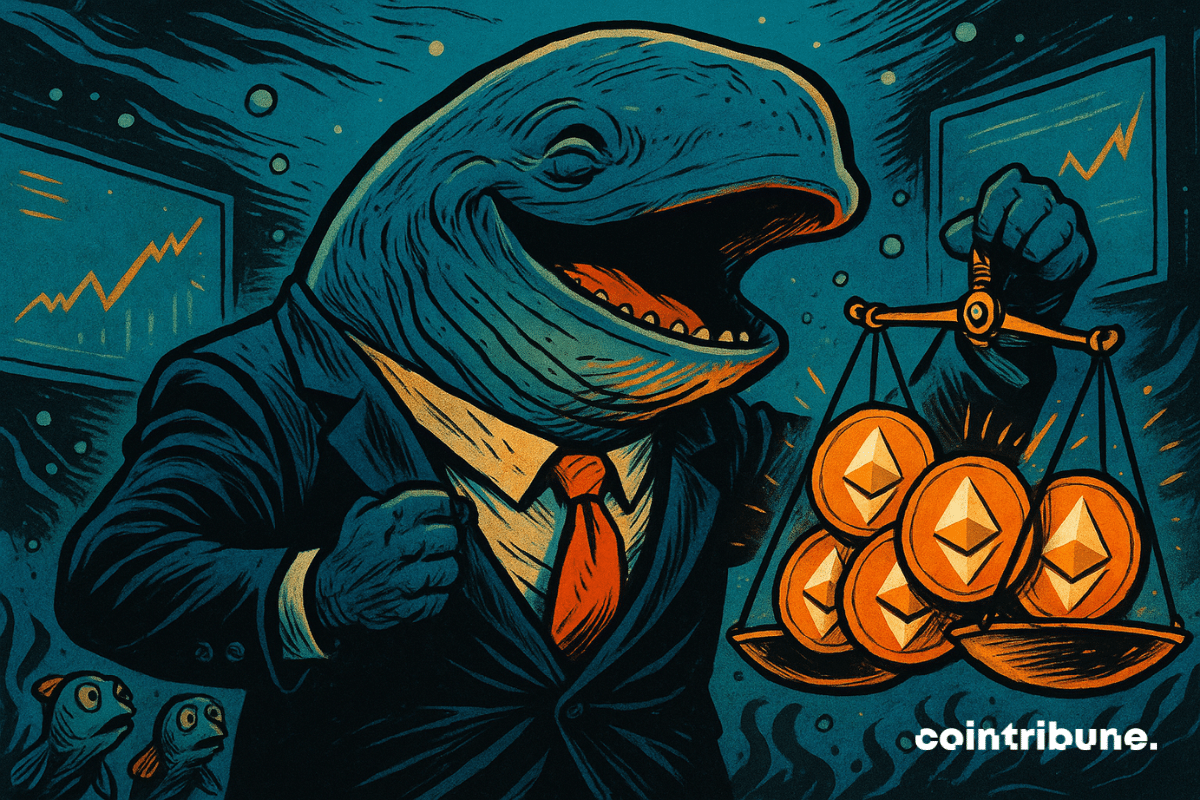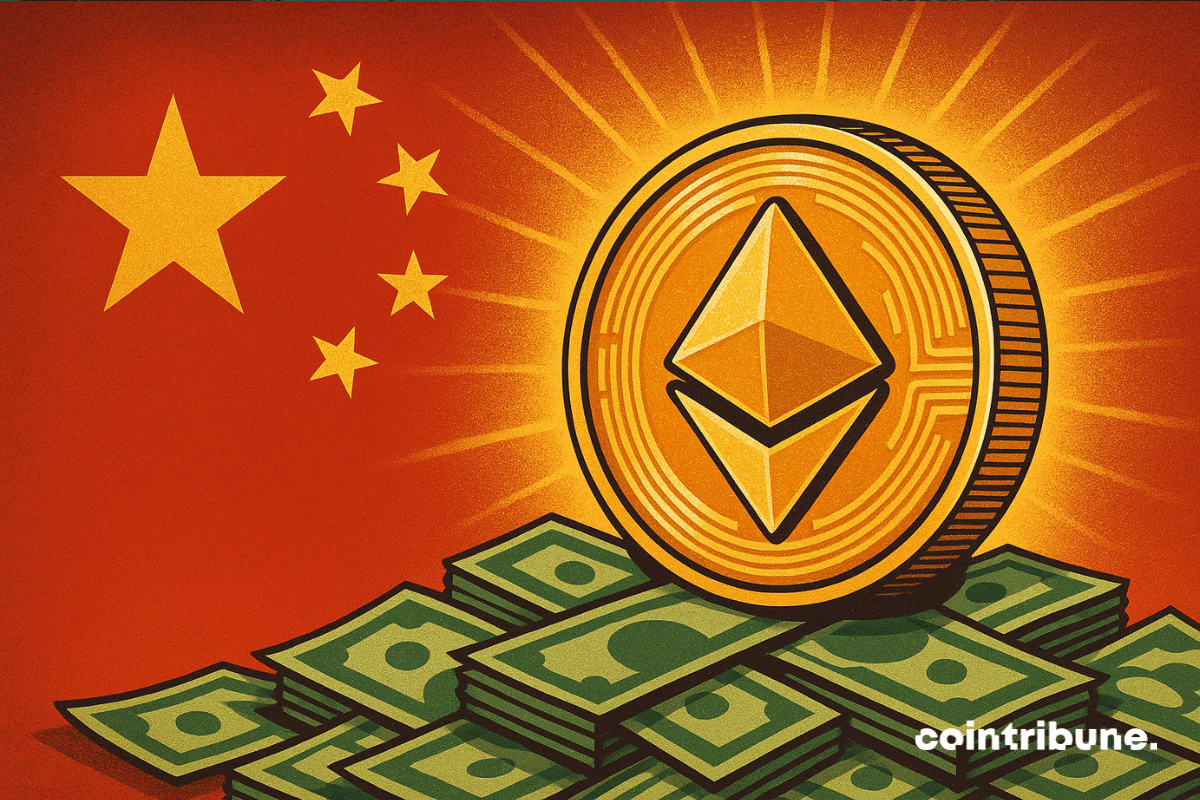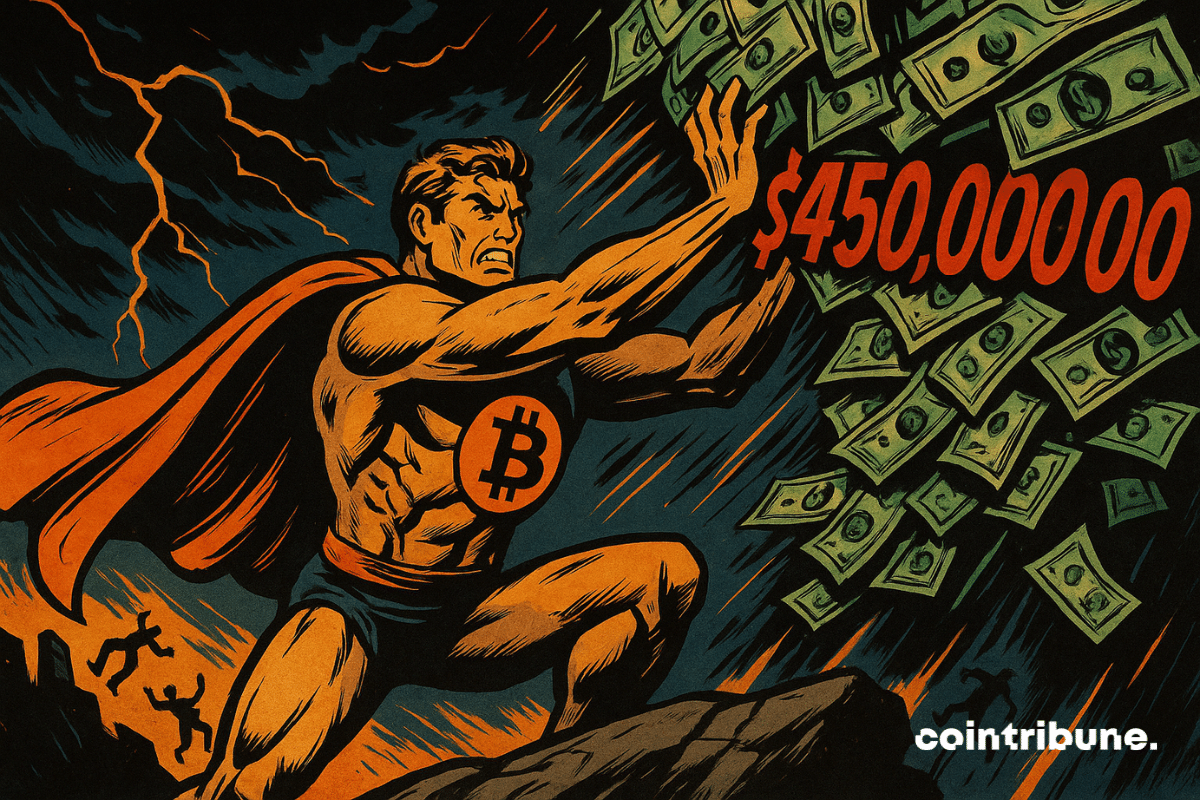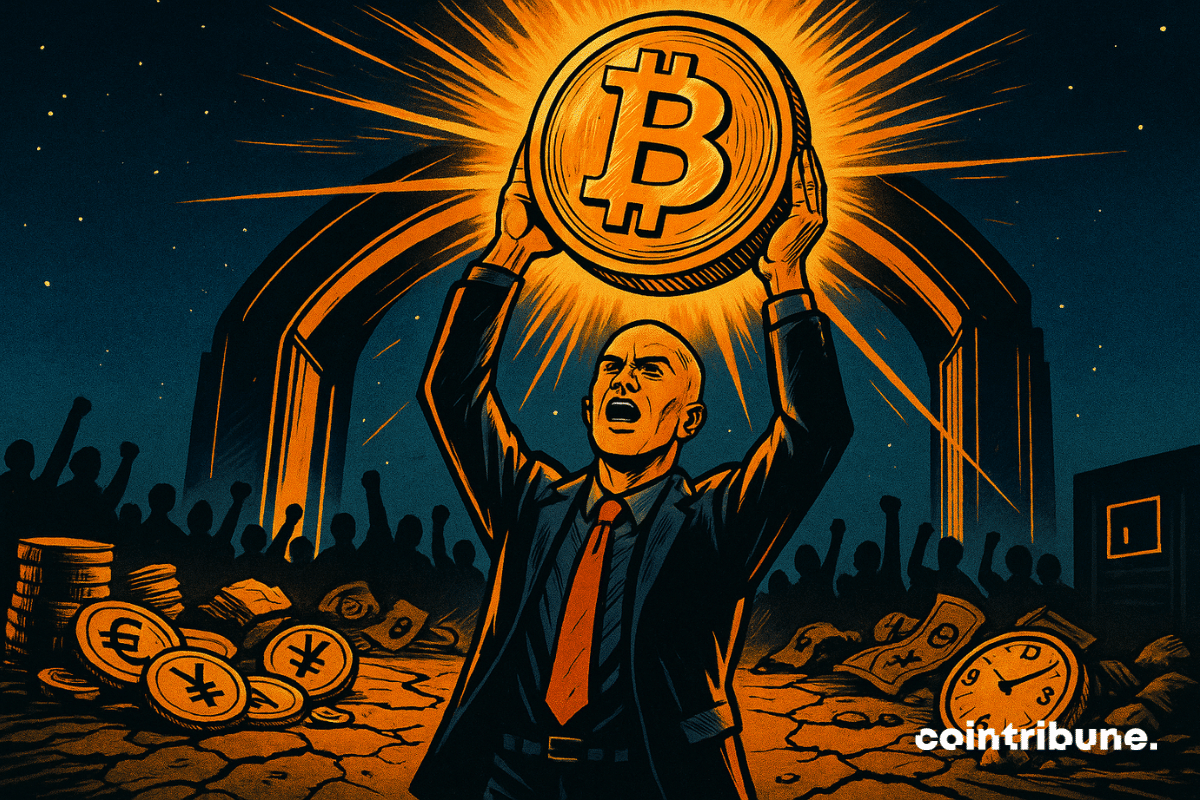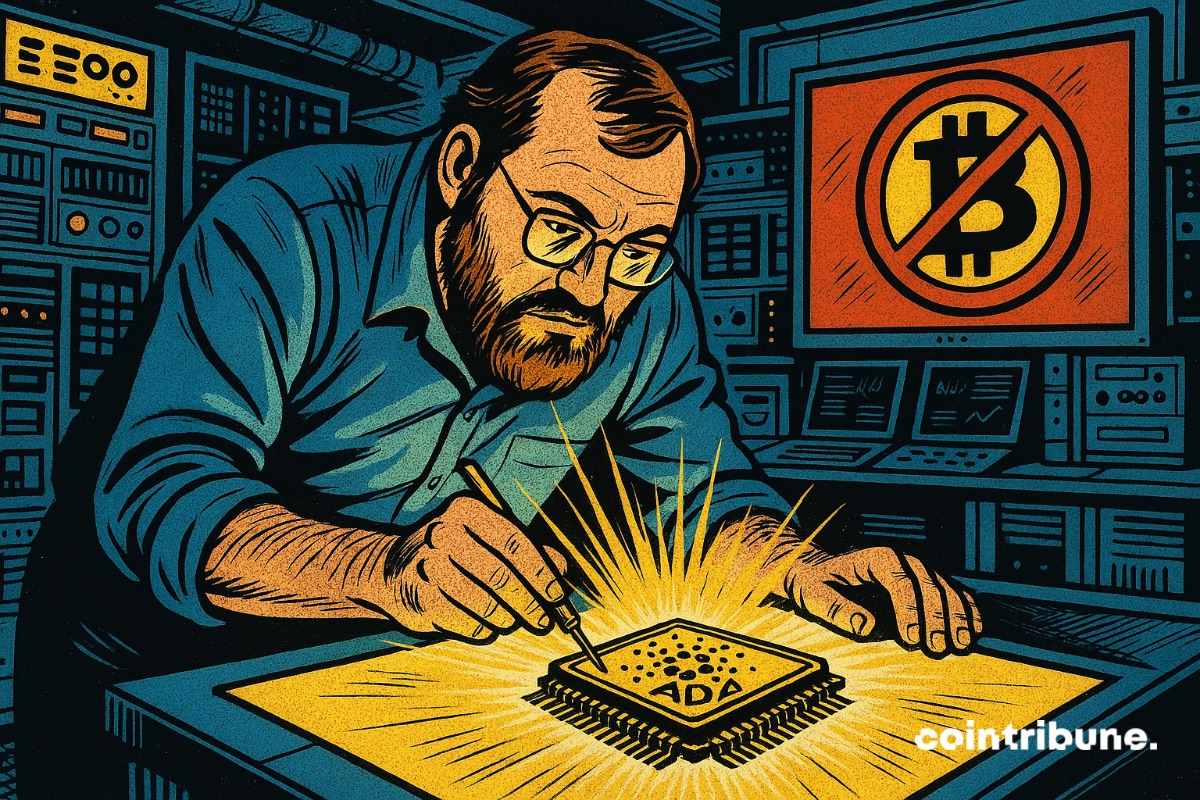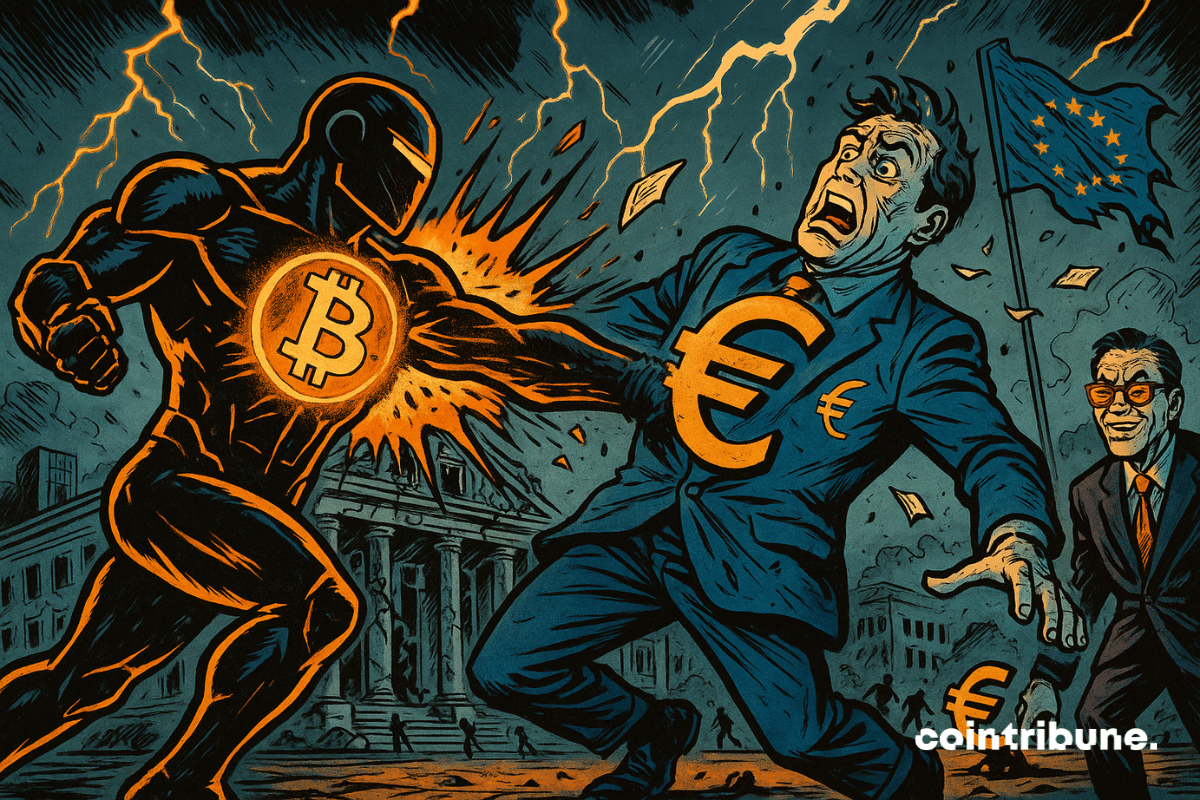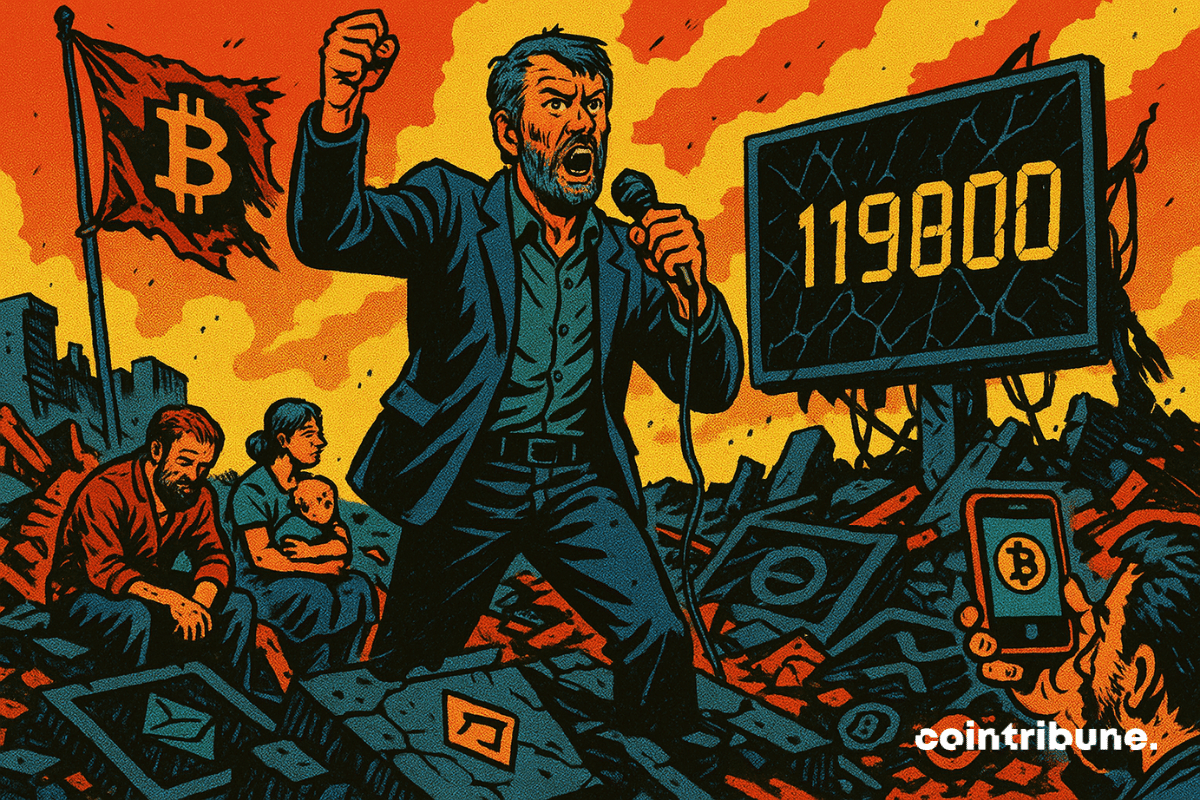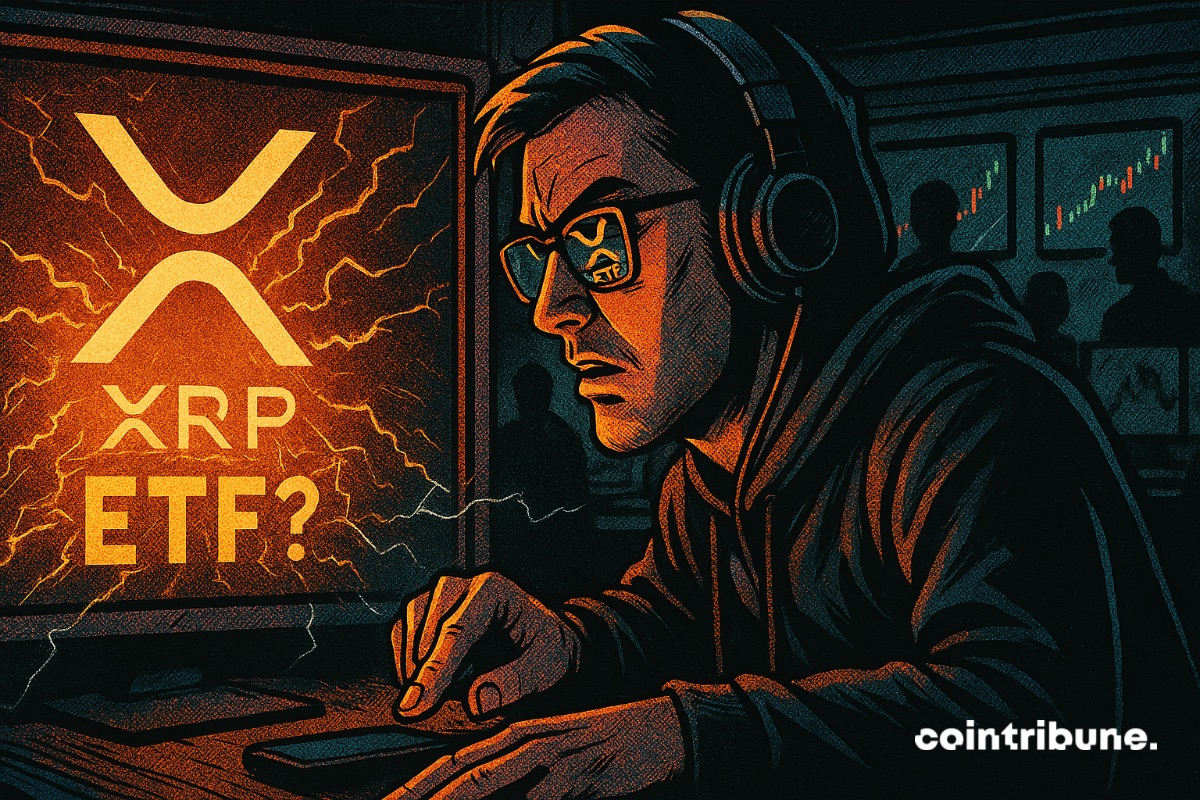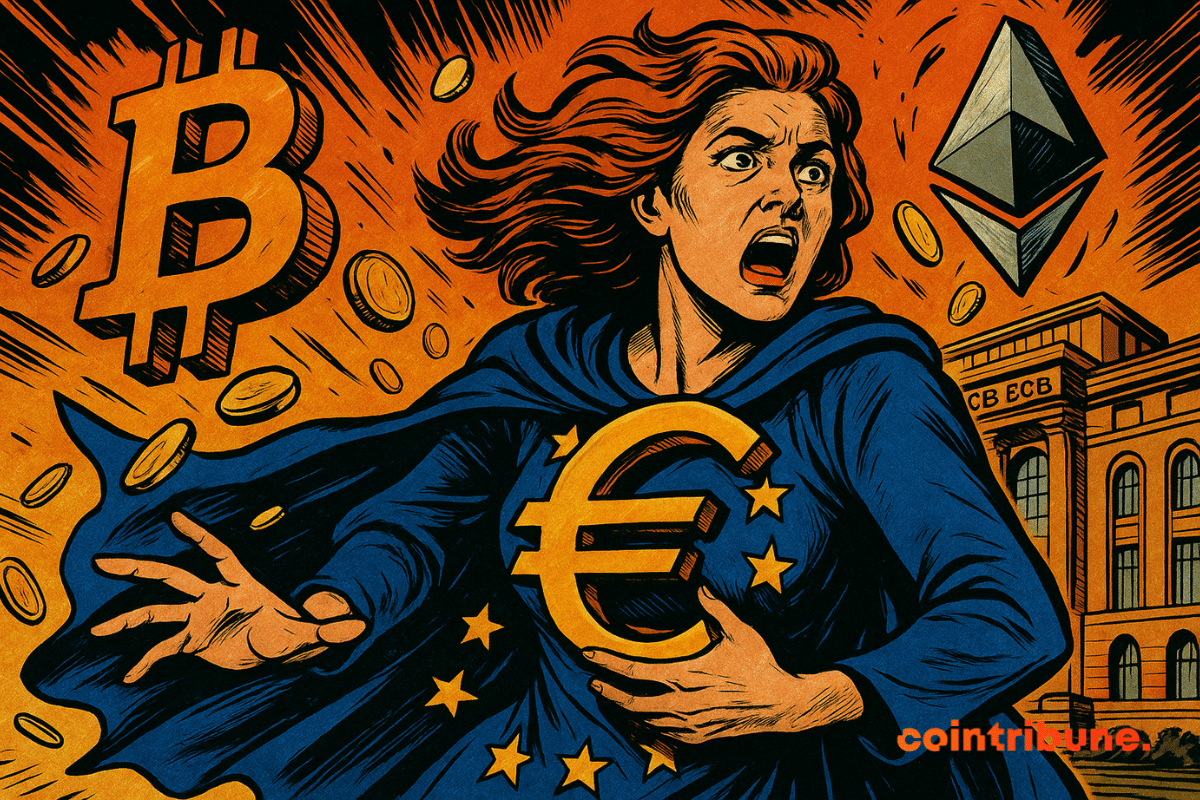Bitcoin hit a three-week low early Friday as investors reacted to Donald Trump’s sweeping executive order on trade tariffs, triggering a broader sell-off across stocks and crypto markets.
Crypto News
The dollar is roaring, and Bitcoin is taking a hit. That’s the scenario taking shape as the U.S. Dollar Index (DXY) climbs past 99.98 points, reaching its highest level in two months. This upward move coincides with the Federal Reserve’s decision to keep interest rates unchanged—a strong signal to markets, though not necessarily a favorable one for Bitcoin.
The $NAORIS token debuted yesterday afternoon on multiple exchanges simultaneously: Binance Alpha opened trading, followed by a NAORISUSDT perpetual contract on Binance Futures. MEXC launched the spot market, Bitget listed NAORIS/USDT, and LBank opened within the same window.
Boosted by record inflows into ETFs, Ethereum has just recorded its strongest monthly rally since 2022. This spectacular rebound propels ETH to the forefront of portfolios, challenging the dominant Bitcoin narrative. Is Ethereum becoming the must-have crypto asset, akin to tech stocks in the 1990s? Or is institutional adoption masking a deeper fundamental weakness?
The NFT market has just recorded its second-best month of the year, reaching $574 million in sales in July—a nearly unexpected rebound. While the number of buyers is declining, the average transaction value is rising, and Ethereum-based collections are surging. Is this just a temporary rebound—or the start of a more selective new cycle?
For years, Ethereum has been a big player in crypto. But it has always struggled to win over Wall Street. Now, a new group of treasury companies may have cracked the code to make ETH more palatable to traditional investors.
The standoff between Donald Trump and the Federal Reserve is intensifying. The president accuses the institution of sabotaging the economic recovery by refusing to lower interest rates quickly. Ahead of a decisive meeting and amid growing trade tensions, the Fed is under heavy fire. In an increasingly politicized environment, the central bank’s independence is being tested as markets scrutinize its every signal while the U.S. economic trajectory remains uncertain.
The transformation of Web3 cybersecurity begins today, and Cointribune gives you the chance to be among the first to lead the way... while earning exceptional rewards! To celebrate the Naoris Protocol TGE on July 31, 2025, we're launching an exclusive contest with over €2,000 in prizes. From July 31 at 9 p.m. to August 14, 2025, at midnight, discover the world’s first post-quantum cybersecurity protocol and try to win Ledger Nano S Plus devices, $NAORIS tokens, and exclusive collector's goodies.
eToro is taking a big step into real-world asset (RWA) tokenization. The company announced plans to launch tokenized versions of the 100 most popular US-listed stocks and ETFs as ERC-20 tokens on the Ethereum blockchain.
Driven by millions of supporters since its launch, Pi Network is currently experiencing a period of intense instability. The price of its token is falling sharply, approaching a concerning historical threshold. This project, once presented as a decentralized alternative accessible to all, now raises growing doubts about its viability. Caught between community enthusiasm and selling pressure, Pi Network finds itself at the center of discussions, crystallizing the tensions of a market where initial euphoria gives way to expectation.
As the summer heat reaches its peak, the crypto market could experience an unexpected cooling. In August, the value of token unlocks could drop by half to around 3 billion dollars, down from over 6 billion in July. A sharp decline, certainly, but far from signaling a lasting calm.
July 2025 marked a turning point for the crypto universe. Between the breakthrough of stablecoins, the collapse of Bitcoin reserves, and global regulatory advancements, five major events are shaping a new dynamic. Here’s what you definitely should not have missed.
Digital assets are creeping into the corridors of mainstream finance, and this time, stablecoin issuer Circle is joining forces with a Florida-based fintech firm to bring USDC to more retail customers and businesses. This partnership aims to offer U.S. citizens a trusted digital dollar option for both local and cross-border transactions.
As cryptocurrencies reshape the global financial balance, the Trump administration reveals its strategic response. An anticipated report from the President’s Working Group on Digital Assets lays the groundwork for an explicit pro-crypto framework: innovation encouraged, regulation strengthened. This ambitious plan aims to propel the United States to the forefront of the technological race while asserting its economic sovereignty against the rise of rival actors.
Signals are multiplying in the crypto ecosystem. After months of overwhelming dominance by Bitcoin, altcoins are showing signs of awakening. Sygnum, the Swiss digital bank, anticipates a major rotation of capital. Could this long-awaited altseason finally be starting?
Bitcoin has gone from a routine decentralized medium of exchange to become one of the most valuable assets in the world. And as with any apex asset, the OG coin has witnessed massive global interest from both corporate bodies and regional powers. Top industry stakeholders are now calling for an increased portfolio inclusion of the first-born crypto, highlighting it as a store of value amid the rising U.S. debt profile.
The XRP derivatives market has just experienced a major shock: $2.4 billion in open interest evaporated, and a 15% drop in price within a few days. This brutal withdrawal of leverage raises questions. Should we see it as a simple adjustment or the beginning of a deeper reversal? While some continue to bet on a bullish recovery, technical signals are becoming unclear and introducing doubt. Is XRP entering a prolonged turbulence zone?
PayPal is doubling down on crypto. The payments giant just revealed a new checkout feature that lets U.S. merchants accept payments in over 100 cryptocurrencies, including Bitcoin, Ethereum, Solana, and major stablecoins like USDT and USDC.
Ethereum is attracting strong interest from corporate treasuries and institutional investors. A new report from Standard Chartered revealed that companies have bought 1.26 million ETH in just two months. That amount equals roughly 1% of the total ETH supply. This pace nearly matches the 2 million ETH acquired by ETFs over the same period. Analysts called it the strongest buying wave ever seen for Ethereum ETFs. Geoffrey Kendrick, the bank’s global head of digital assets research, expects this trend to intensify.
E-commerce giant JD.com is getting ready to enter the stablecoin race as Hong Kong’s regulatory regime for digital currencies officially kicks off. The company has registered two potential stablecoin-linked entities, Jcoin and Joycoin, through its fintech arm JD Coinlink Technology, just days before the city’s new framework takes effect.
Interest in stablecoins is reaching unprecedented heights. As the market capitalization crosses the historic threshold of 270 billion dollars, Google searches are literally skyrocketing. Does this rush towards stable digital currencies coincide with the adoption of the GENIUS law?
Sequans boosts Bitcoin holdings with an $88.5M purchase amid growing institutional demand.
Galaxy Digital moved nearly 3,800 BTC, worth about 450 million dollars, to exchange platforms. Despite this, bitcoin remains stable around 119,000 dollars, showing no signs of panic. Even a brief drop to 117,000 dollars was not enough to change the trend.
On July 29, Brian Armstrong, CEO of Coinbase, stated that "bitcoin is probably the best form of money ever created." Indeed, this statement resonates in a context where bitcoin is regaining traction among institutions. As the crypto ecosystem redefines itself, Armstrong reignites the debate on the monetary legitimacy of bitcoin and once again establishes himself as one of the most listened to voices in the sector.
Could Bitcoin be surpassed by Cardano? Charles Hoskinson, founder of ADA, claims that his project offers more yield, utility, and potential. Discover why Cardano could very well disrupt the balance of the crypto market by 2025.
Is the euro capitulating to bitcoin? Once marginal, the idea is now making a strong impression as the European currency hits new historical lows against the leading cryptocurrency. Max Keiser, a figure in Bitcoin maximalism, reignites the debate with a shocking prediction. This is a strong signal in a context where monetary mistrust is gaining ground, and where technical fundamentals seem to support advocates of a global monetary shift.
While Bitcoin wavers after flirting with its all-time highs, Michael Saylor quotes Phil Knight sharply. Through this nod to the founder of Nike, the founder of Strategy reaffirms his tough stance. A strong reminder directed at weakened investors, in an environment where trust is measured by shifting trends.
Could XRP sign one of the biggest crypto rebounds of the year? With favorable regulation, anticipation of an ETF, and growing institutional adoption, all signals seem to align. Discover why analysts remain confident despite the recent correction.
European monetary sovereignty is wavering. In the face of the meteoric rise of dollar stablecoins, the ECB admits its limitations. The digital euro alone will not be enough. To avoid ceding more power to the United States, the Union must bet on private innovation, euro stablecoins, and decentralized technologies. A call for boldness.
Monero, the privacy-focused crypto veteran, is looking at a potential existential crisis as rival blockchain Qubic inches closer to launching a 51% attack. This is a rare, controversial, and deeply destabilizing move in the crypto world.
